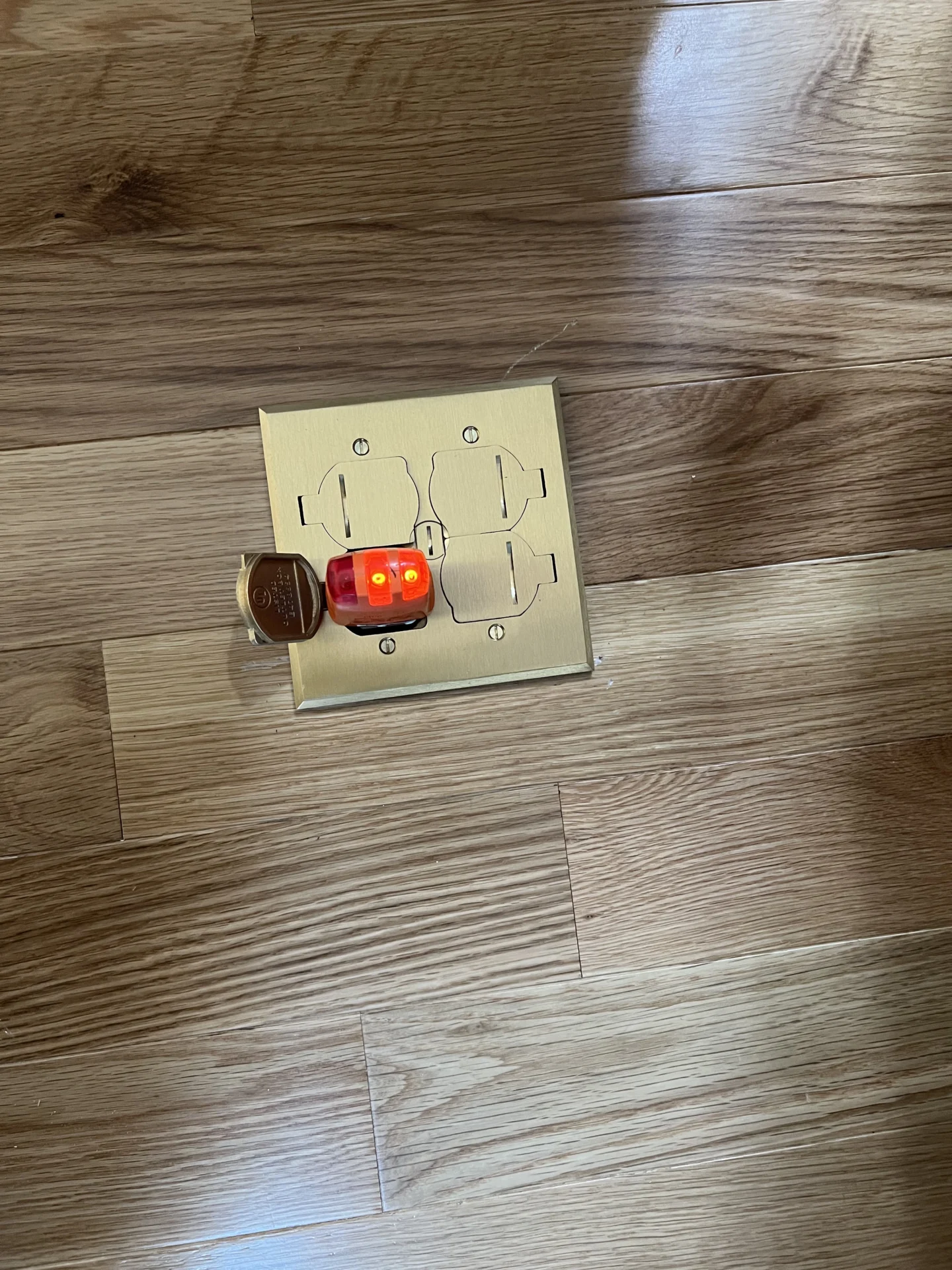Are you upgrading your home’s electrical safety features or installing GFCIs for the first time? If yes, understanding their importance and functionality is essential. In this guide, we’ll walk you through everything you need about GFCIs, from their purpose and benefits to installation and maintenance tips. Let’s dive in and empower your home with advanced electrical safety solutions!
Understanding Ground Fault Circuit Interrupters (GFCI)
Ground Fault Circuit Interrupters (GFCIs) are electrical devices designed to protect against electric shock hazards by quickly interrupting the flow of electricity when a ground fault is detected. They are commonly installed in areas where water and electricity may come into contact, such as kitchens, bathrooms, laundry rooms, and outdoor outlets.
Key Features of GFCIs
- Sensitivity to Ground Faults: GFCIs monitor the current flow between the hot and neutral wires and trip the circuit if they detect a slight imbalance, as little as five milliamps, indicating a potential ground fault.
- Fast Response Time: GFCIs interrupt the circuit within milliseconds of detecting a ground fault, minimizing the risk of electric shock and potential injury.
- Dual Protection: GFCIs provide overcurrent protection, like circuit breakers and ground fault protection, making them a crucial safety feature in residential and commercial electrical systems.
- Test and Reset Buttons: GFCIs are equipped with test and reset buttons, which allow users to periodically test the device’s functionality and reset it after a trip.
Benefits of GFCIs
Ground Fault Circuit Interrupters (GFCIs) offer several vital benefits in electrical systems, enhancing safety and reducing the risk of electrical hazards. Here are some critical advantages of GFCIs:
- Protection Against Electrical Shocks: One of the primary benefits of GFCIs is their ability to quickly detect ground faults and interrupt the flow of electricity to prevent electrical shocks. By constantly monitoring the electrical current flowing through a circuit, GFCIs can detect even minor imbalances in current caused by ground faults, such as when current flows through a person’s body instead of the intended path. This rapid response helps minimize the risk of severe injury or electrocution.
- Prevention of Electrical Fires: GFCIs protect against electrical shocks and help prevent electrical fires by interrupting the circuit when a ground fault is detected. Ground faults can create sparks or arcs that ignite nearby combustible materials, leading to fires. GFCIs reduce the risk of arc faults and potential fire hazards by quickly cutting off power to the circuit.
- Enhanced Safety in Moisture-Prone Areas: GFCIs are particularly beneficial in areas where moisture or water is present, such as kitchens, bathrooms, laundry rooms, and outdoor spaces. Water is a conductor of electricity and can increase the likelihood of ground faults and electrical shocks. GFCIs installed in these areas provide extra protection against shock hazards, even in damp or wet conditions.
- Code Compliance: Electrical codes and regulations in many jurisdictions require GFCIs in specific locations and applications, such as kitchens, bathrooms, garages, outdoor outlets, and swimming pools. Installing GFCIs ensures compliance with these safety standards and helps protect residential, commercial, and industrial building occupants from electrical hazards.
- Versatility and Compatibility: GFCIs are available in various types and configurations to suit different applications and electrical systems. Whether as receptacles, circuit breakers, portable devices, or combination units with other protective features such as arc fault protection, GFCIs offer versatility and compatibility with a wide range of electrical installations.
- Peace of Mind: By providing reliable protection against electrical shocks and fires, GFCIs offer peace of mind for homeowners, business owners, and occupants of buildings. Knowing that GFCIs are installed in critical areas of the electrical system helps reduce anxiety about electrical safety and enhances overall confidence in the electrical infrastructure.
GFCIs play a crucial role in electrical safety, offering multiple benefits that contribute to a safer and more secure environment for individuals and property. Installing GFCIs is a proactive measure that can help prevent accidents, injuries, and property damage associated with electrical hazards.
Types of GFCIs
There are several Ground Fault Circuit Interrupters (GFCIs), each designed for specific applications and environments. Here are the main types:
- Receptacle GFCI: A receptacle GFCI is a standalone device that replaces a standard electrical outlet. It protects against ground faults for any devices or appliances plugged into the outlet. Receptacle GFCIs are commonly used in kitchens, bathrooms, outdoor areas, and other locations where moisture or water is present.
- Circuit Breaker GFCI: A circuit breaker GFCI is installed in the electrical panel, protecting an entire circuit. It monitors the current flow in the circuit and trips the breaker if it detects a ground fault. Circuit breaker GFCIs are typically used in older homes or where installing receptacle GFCIs is impractical or cost-prohibitive.
- Portable GFCI: A portable GFCI is a compact apparatus that can be plugged into a conventional electrical outlet and provides GFCI protection for electrical appliances and tools. Portable GFCIs are commonly used with power tools, extension cords, and outdoor equipment to prevent electrical shocks in temporary or portable applications.
- Combination GFCI/AFCI: A combination GFCI/AFCI device provides both ground fault and arc fault protection in a single unit. It detects and interrupts ground and series arcing faults, offering comprehensive protection against electrical hazards such as shocks and fires. Combination GFCI/AFCI devices bedroom, living room, and other spaces where arc faults are present are typical places where they are utilized a concern.
- Dual-Function GFCI/AFCI: Similar to combination GFCI/AFCI devices, dual-function GFCI/AFCI devices provide ground fault and arc fault protection. However, they offer greater flexibility by allowing the user to choose between GFCI protection, AFCI protection, or both, depending on the installation’s specific requirements.
These are the main types of GFCIs typically utilized in electrical systems that are found in residential, commercial, and industrial settings. Choosing the correct type of GFCI depends on factors such as the application, location, and specific electrical requirements of the installation.
It is absolutely necessary to seek the advice of a competent electrician to determine the most appropriate type of GFCIfit your requirements, as well as to guarantee the correct installation and compliance with electrical codes and regulations.
Installation and Maintenance
While GFCI installation can be a DIY-friendly project for those with electrical experience, it’s essential to carefully follow safety guidelines and manufacturer instructions. Here’s an overview of the installation process:
- Turn off Power: Before installing a GFCI, turn off the power to the circuit at the main electrical panel to prevent electrical shocks.
- Remove Old Outlet: If replacing an existing outlet with a GFCI, carefully remove the old outlet from the electrical box and disconnect the wires.
- Connect Wires: Connect the hot (black) and neutral (white) wires to the corresponding terminals on the GFCI, ensuring proper polarity and tight connections.
- Ground Connection: If the electrical box is grounded, connect the GFCI’s ground terminal to the grounding wire using a grounding screw or pigtail.
- Install the GFCI: Securely mount the GFCI to the electrical box, ensuring that the test and reset buttons are accessible.
- Test Functionality: After installation, press the test button to verify that the GFCI trips and cuts off power. Reset the GFCI to restore power.
Maintaining GFCIs is relatively simple and involves periodically testing the device using the test button and resetting it if necessary. Additionally, inspect GFCIs for signs of wear, damage, or corrosion and replace them if they show signs of deterioration.
At The Go-To Crew Electric, we’re dedicated to providing top-quality electrical services, including GFCI installation and maintenance, to ensure the safety and satisfaction of our customers. If you’re ready to enhance your home’s electrical safety, don’t hesitate to contact our team of experts. Let’s make your home a safer place together!



